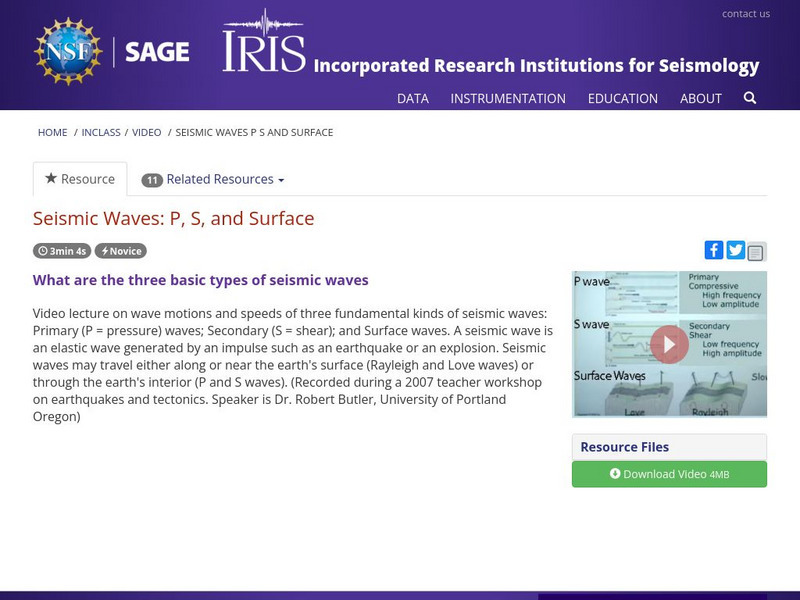Khan Academy
How We Know About the Earth's Core
The big question is, how do we know about the composition of the earth's core? Sal explains that at 105 degrees from the source point of an earthquake, the phenomenon of the p wave shadow zone leads us to conclude that the waves are...
PBS
Seismic Waves | UNC-TV Science
No need to wave the white flag. Use an animation to demonstrate the motion of seismic waves instead. A short animation shows the motion of longitudinal and transverse waves. Pupils also learn how the movement displaces the earth.
Fuse School
Structure and Composition of the Earth
Why is Earth different from other planets? What makes it so special, anyway? It's only fitting to delve into how the "parent" rock was formed in the first installment of a seven-part series about rocks and rock formation. Amateur...
Crash Course
Orbitals
What do molecules look like anyway? A video explores the orbitals of molecules that determine their shape, including S and p orbitals and their hybridization. It also introduces sigma and pi bonds so learners can fully grasp the...
Khan Academy
Seismic Waves, Earth Geological and Climatic History, Cosmology and Astronomy
Use a video on seismic waves to explain the differences between S and P waves, as well as the details that they provide about the composition of the rock.
Incorporated Research Institutions for Seismology
Iris: Seismic Waves: P, S, and Surface
Video lecture on wave motions and speeds of three fundamental kinds of seismic waves: Primary (P = pressure) waves; Secondary (S = shear); and Surface waves. [3:10]





